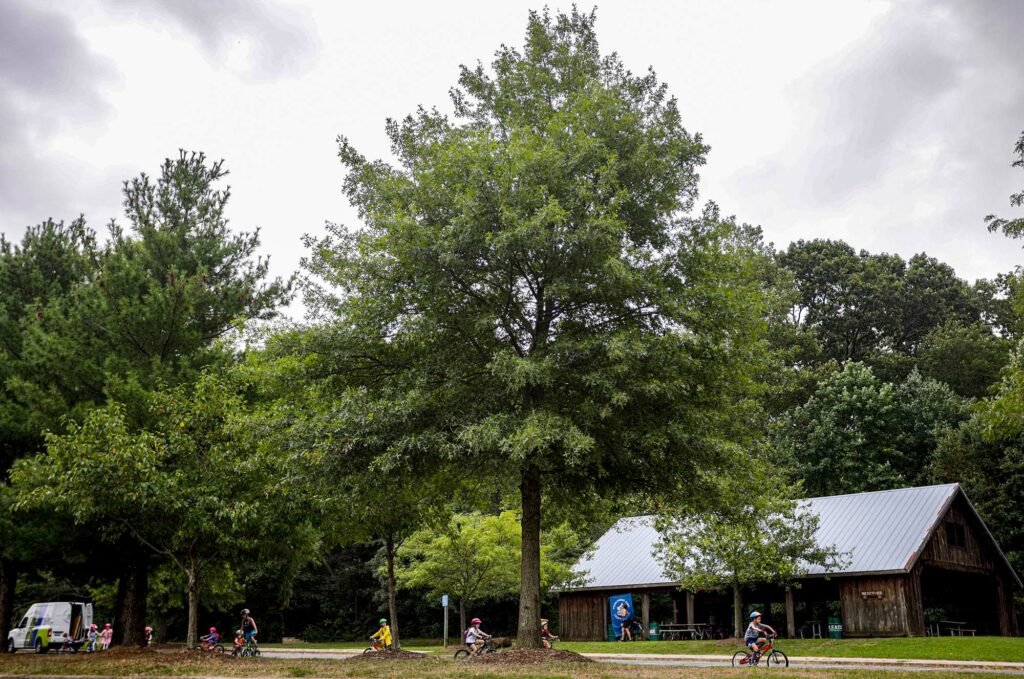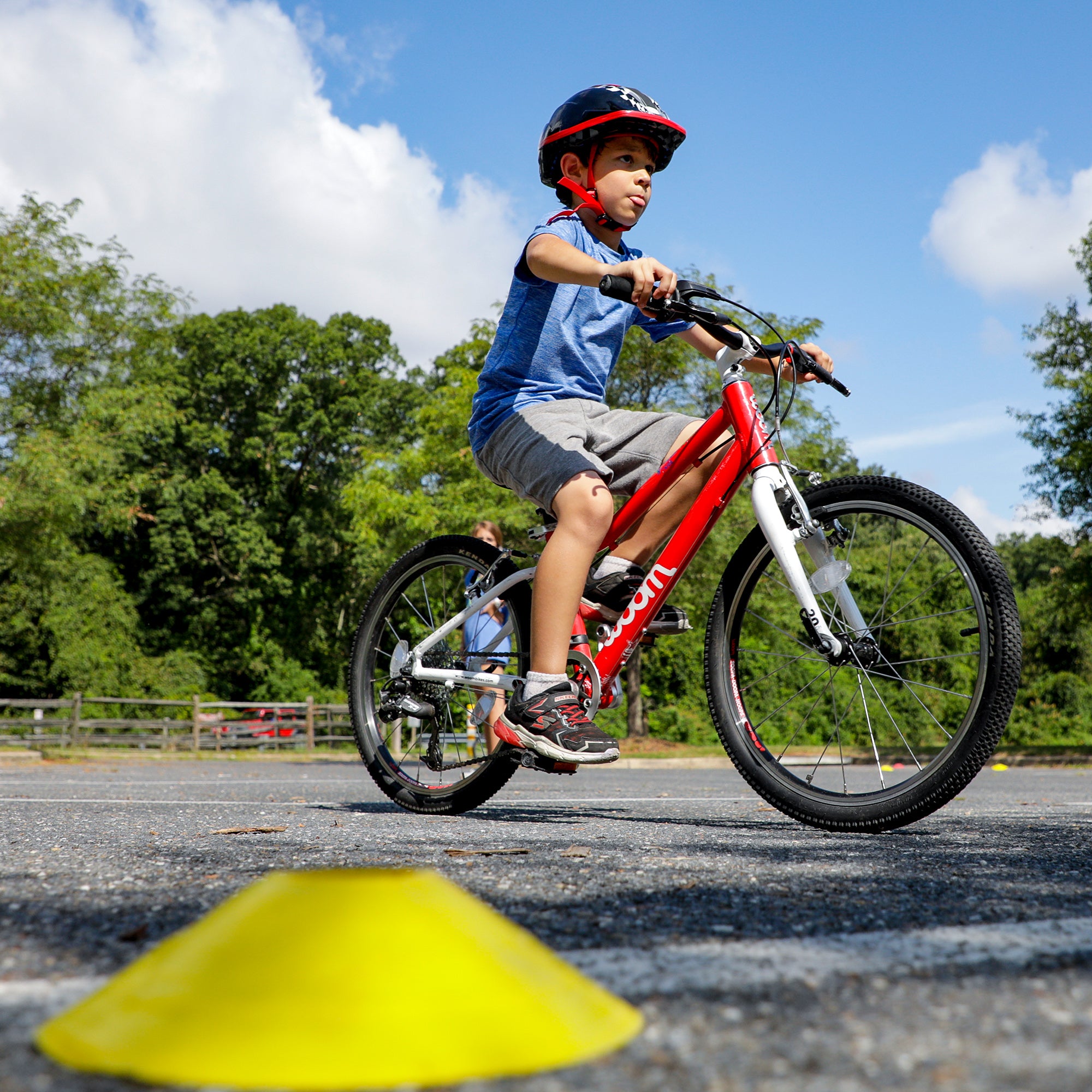Most of us can remember the first time we rode a bike, many of us can remember it vividly. It’s one of those significant milestones of early childhood that often becomes family lore as well- i.e., “that time Dad pushed Jane down the hill.” From my own childhood, maybe age 5, I recall plans for an afternoon playdate with two friends who had already ditched the training wheels- and only one morning for me to join the two-wheeler club! I WOULD ride my bike in time for that playdate, even if it meant arriving a bit battered and bruised, applying the fierce determination, independence, and stubbornness that has persisted to this day.

Fast forward 30 years and my own daughter’s first solo roll on two wheels involved a tumble into a drainage ditch alongside our driveway in the dark–where she insisted on practicing, alone. Apple doesn’t fall far from the tree.
Whether or not you can remember the details of learning to ride your bike, you can probably still remember how you felt–like you could conquer the world! At the very least, you could get around the world yourself, using your own two legs. If not the world, well, the neighborhood pool and your best friend’s house. You could choose your own adventure and make it happen! It is my sincere desire that EVERY kid get to experience the power of the bicycle- independence, freedom, adventure, self-sufficiency, and fun.


I launched PedalPower Kids when I realized so many kids were not learning to ride and were not experiencing the power of life on a bike as part of their childhoods. The reasons are numerous and complex and impact children of all socioeconomic levels, in cities, suburbs, and rural areas across the US. It’s infrastructure, and technology, and overscheduling, and academic pressures, and safety/crime concerns–so many reasons to list. Yet in other parts of the world, where digital distractions also exist, riding bikes is still a daily part of life for kids, like in the Netherlands, where my family was lucky enough to take a cycling trip this past summer. I might not be able to turn Annapolis, Maryland into Amsterdam overnight, but I’m doing everything I can to make childhood around here a little more Dutch. Less than two years in, I see fuller bike racks at schools, neighborhood bike gangs, and families out and about on our local trails.
It’s hard to put into words what it feels like to bear witness to a child struggling to ride, facing big fears, falling and failing, and then getting back up again and trying once more. Then twice more. Then, however, many more times it takes. Brene Brown says, “Daring greatly is being brave and afraid every minute of the day at the exact same time.” And I think that about sums it up. Our new bike riders who have dared greatly now know that they can do hard things. And they get to take that new knowledge and confidence with them to class, in peer interactions, on the sports field, and at home.
Parents often ask me of little ones what can they do to get their kiddos riding early. Balance is the fundamental skill required to ride a bicycle, and our programs are all balance-based. So, get your toddler on a balance bike. But here’s the most crucial piece of advice: let them ride the bike! Developmentally, this means that they’ll ride in stages. These stages might be maddeningly slow to you fully capable cyclists out there, give those kids time to develop their riding. Progression occurs as they develop balance but more so with the development of trust. Trust in the bike, trust in their abilities, and trust that you, as a parent, will keep them safe. Again, this does not mean doing it for them. The progression on a balance bike goes from simply walking with the bike to starting to stay seated and run, and then eventually gliding and balancing for longer and longer stretches.
Just as training wheels are a deterrent to the development of balance and core strength, parents need to be mindful to leave the bike handling to their little rider. A push to help simulate a glide is great, an uneven one-handed hold on a handlebar, not so much. Go explore with your kiddos on balance bikes, and you’ll soon find that they are gliding faster than you can walk.






Comments